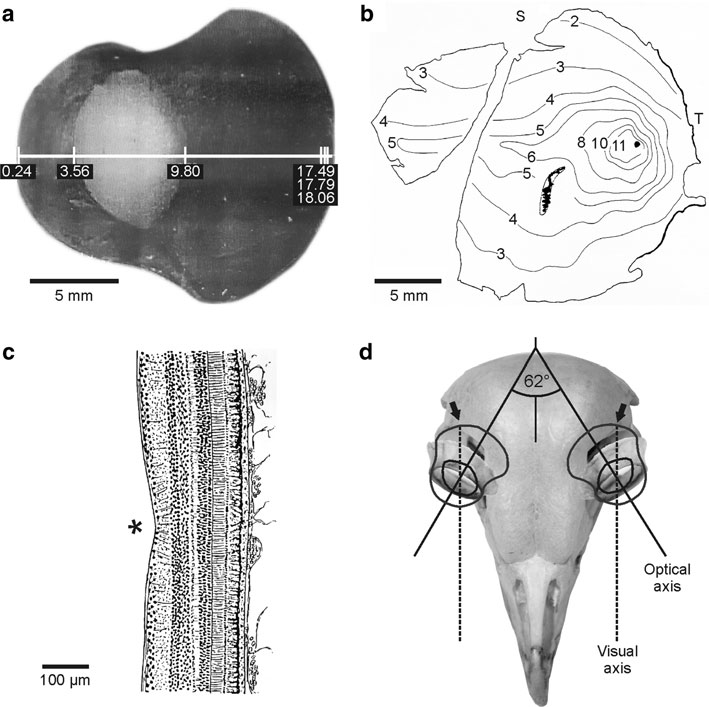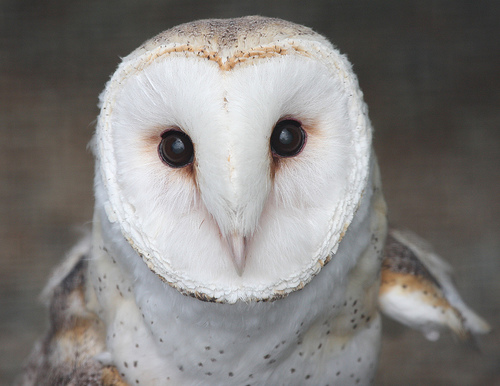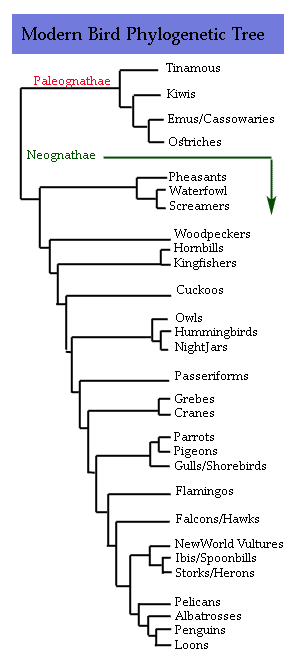Classification
The classification for Tyto alba (the Barn Owl) is as follows (lifestyle.iloveindia.com):
Domain-Eukarya
The Barn Owl belongs to this domain because it has membrane bound organelles.
Kingdom-Animalia
The Barn Owl belongs to this kingdom because they lack a cell wall and are
multicellular. Barn Owls are
also heterotrophic and digest food in an internal chamber.
Phylum-Chordata
The characteristic that allows Barn Owls to be in this phylum is that
they have a vertebral column.
Class-Aves
The Aves are
adapted for flight, have feathers, and light honeycombed bones.
Also, the Aves lay eggs and have no teeth, but do have a beak.
Order-Strigiformes
What classifies the Barn Owl to be in this order is that they are
nocturnal birds of prey. This order includes many other owl species as well such as the
Barred Owl.
Family-Tytonidae
This family includes all of the Barn Owls.
Genus Species-Tyto alba
Tyto alba means white (alba) night owl (Tyto). The Barn Owl is a
nocturnal bird, which
means they are most active during the night. The Barn Owl is also
white in color with
dark specks.
Barn Owls are known for their heart-shaped face with dark eyes. They are pale in color and have long wings and legs. They are about 24-45 cm lengthwise and have a wingspan of 75-110 cm. Their long wings fold behind their tail, they have feathered legs and no ear tufts. The Barn Owl also has a distinct tail shape because when the owl flies the tail has a wavering motion and their legs dangle. Some other features of the Barn Owl is that their upper body is a light grey color, and can be brown colored as well with black and white specks (Johnson, 2012).
Barn Owls are very silent as they fly during the night to hunt. There are several adaptations of their wings and wing feathers that allow for them to reduce noise when they fly. One of these adaptations that has been discovered are the fringes at the inner vanes of their wings. These vanes merge into other feather vanes and the adjacent feathers results in a smooth, lower wing surface, and reduces sharp and noisy edges (Bachmann, 2012).
The eyes of the Barn Owl are also very interesting. The Barn Owl's eyes have a larger retinal image and a focal length that is constrained. The ratio between the focal length and the maximal entrance pupil diameter is known as the f-number. Barn Owl's have a low f-number of 1.3 which is related to having a brighter retinal image that is characteristic of a nocturnal lifestyle. They are tubular in shape and integrated into the skull, so the movements of their eye are very restricted. It has been reported that their eyes can only move about 2°. To compensate for these restricted eye movements, the Barn Owl has the ability to turn their necks quickly up to 270°. Their eyes allow for binocular overlap because they are oriented frontally and their eyes are also adapted to see in dim light. A photo of the anatomy of the Barn Owl's eye and retina are shown below (Harmening, 2011).

a. This image shows a section of the eye that
illustrates the tubular shape and large lens. b. This image is a
retina flat mount with numbers corresponding to the retinal ganglion
cell counts. c. Here is a retinal cross section at the foveal
region, this image shows that much of the Barn Owl's retina is made
up of rods. d. This Figure illustrates the optical and visual axes
of the Barn Owl's eyes (Harmening, 2011).
For a short video
explaining the adaptations of the Barn Owl please visit the
following link:
http://www.youtube.com/watch?v=ohqEquNnzfU

The phylogenetic tree below explains how the Barn Owl relates to other species of modern birds.
As
you can see from this Phylogeny, Owls (Barn Owls included) are most
closely related to hummingbirds and night jars. You can also see
what other species of birds are more closely, or farther away from
Owls. Some other species that are included in this tree are
waterfowl,
falcons, and
geese.
This next phylogenetic tree is a broader example that shows how the Kingdom Animalia is related to the other Kingdoms of organisms.
This Phylogenetic tree is the broadest tree of all the organisms. It shows how the kingdom of animals (where the Barn Owl fits in) is related to the other types of organisms like protists and bacteria.
Home <--->Habitat and Geography


